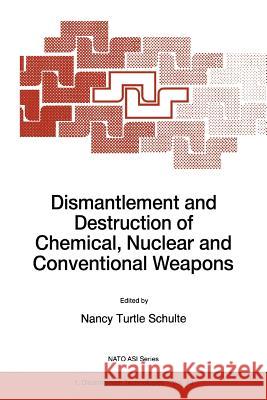Dismantlement and Destruction of Chemical, Nuclear and Conventional Weapons » książka
Dismantlement and Destruction of Chemical, Nuclear and Conventional Weapons
ISBN-13: 9789048148172 / Angielski / Miękka / 2010 / 246 str.
The end ofthe Cold War opened unprecedented opportunities for reductions in weapons of mass destruction. With these opportunities came new challenges, both scientific and political. Traditionally approached by different groups, the scientific, technical and political challenges are inextricably intertwined. Agreements to dismantle and destroy chemical, nuclear and conventional weapons, after having been negotiated via diplomatic channels, require the expertise of scientists associated with their development to determine the safest and most environmentally sound methods of destruction. It is in this context that representatives from sixteen countries and five international organizations were convened jointly by NATO, the Ministry of Foreign Affairs of the Federal Republic of Germany and the State Government of North Rhine Westphalia 19-21 May, 1996 in a meeting near Bonn to take stock of worldwide efforts to destroy and dismantle chemical, nuclear and conventional weapons remaining after the end ofthe Cold War. NATO support was provided under the auspices of the NATO Science Committee's Panel on Disarmament Technologies. The conference brought together the major actors involved in the dismantlement and destruction of chemical, nuclear and conventional weapons, highlighted the substantial accomplishments achieved in this area and pinpointed the remaining technical obstacles still to be overcome. It also underlined the critical importance of transparency, data exchange and verification as indispensable preconditions for disarmament and cooperative security.











